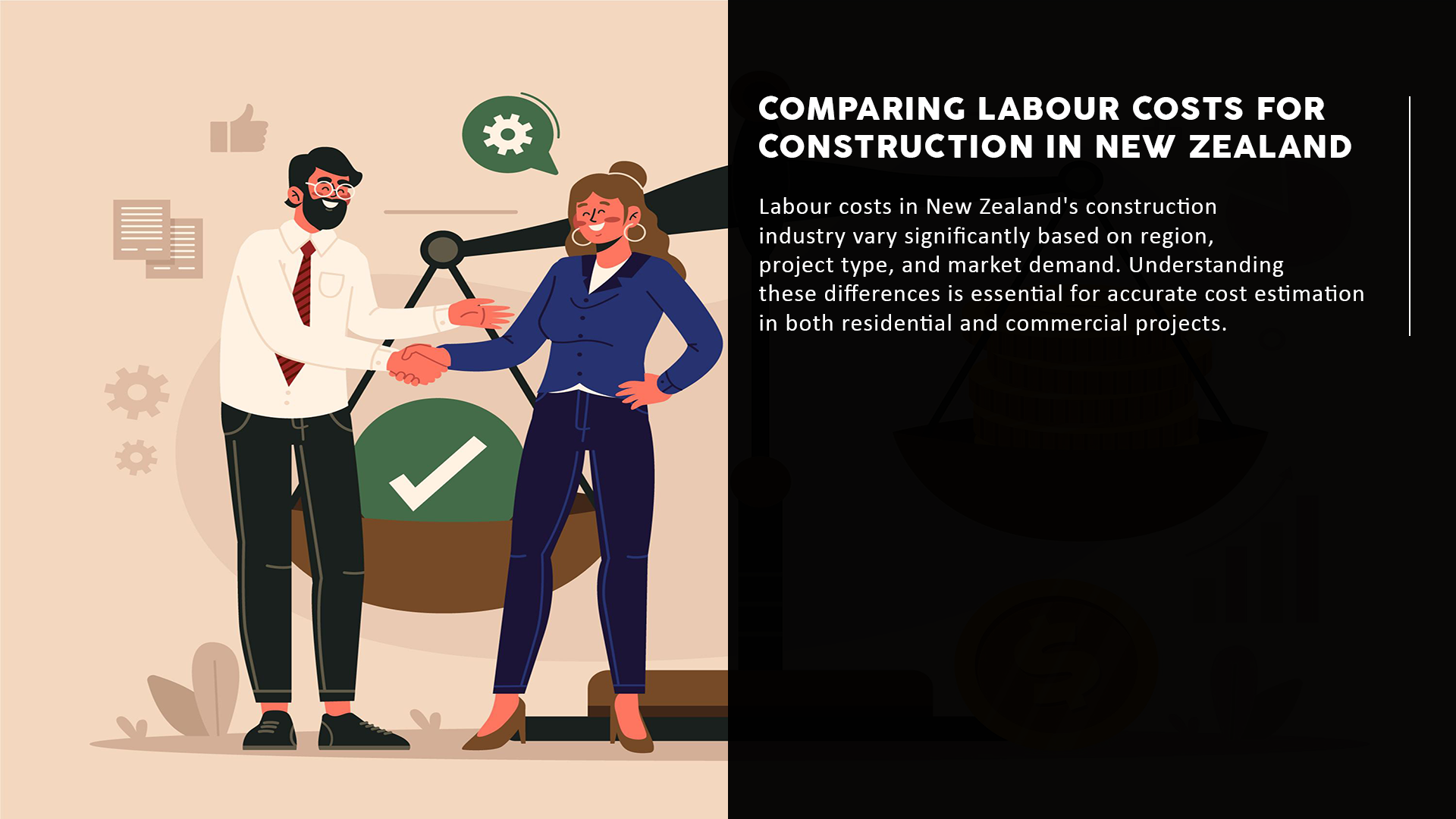
Labour expenses in New Zealand’s construction sector can differ greatly depending on the region, the type of project, and the current market demand. Grasping these variations is crucial for precise cost estimation in residential and commercial projects alike. Below is a comprehensive look at regional trends, estimation methods, and the elements that affect labour costs.
Regional Labour Cost Differences
Labour costs in New Zealand are influenced by various factors, including the density of the population, the demand for skilled labor, and the levels of construction activity in different regions.
Auckland:
- High demand for construction projects, including residential and infrastructure developments.
- Labour shortages and competition among contractors result in elevated costs. Forecasts suggest a growth in construction cost inflation here.
Wellington:
- Labour shortages and the freedom for tradespeople to choose their projects are leading to increased labour costs. The lack of competitive pricing is also a significant factor in escalating expenses.
Christchurch:
- The region continues to feel the effects of past disaster recovery efforts, leading to increased labor costs for significant projects such as hospitals and convention centers.
Rural Areas:
- Labour expenses are generally lower because of decreased demand and a smaller number of high-value projects, although finding skilled workers can pose a challenge.
Also Read: Cost Estimation Trends in New Zealand Construction: 2024 Outlook
Estimating Labour Costs
Estimating labour costs for construction projects requires a detailed understanding of several variables:
For Residential Projects:
- Labour expenses are affected by the scale of the project, its nature (such as single-family residences compared to multi-unit buildings), and the level of customization required.
- Areas with greater housing needs, such as Auckland, usually face increased expenses because of a shortage of available labor.
For Commercial Projects:
- Larger and more intricate projects often need specialized tradespeople, project managers, and subcontractors, typically at higher costs.
- Accurate estimation needs to consider factors such as overtime, contractor profit margins, and changing market rates.
Techniques for Accurate Estimation:
- Historical Data Analysis: Reviewing similar completed projects in the region.
- Labour Market Trends: Monitoring skill shortages and wage fluctuations.
- Digital Tools: Software such as Building Information Modeling (BIM) enhances precision by modeling labor requirements throughout different stages of a project.
Key Influencers of Labour Costs
Skill Shortages: The older workforce and a decrease in new workers entering the construction field are worsening shortages, leading to higher costs throughout New Zealand.
Technological Integration: Use of off-site fabrication and automation can mitigate labour shortages and reduce costs in high-demand areas.
Government Policies: Infrastructure funding and housing initiatives, such as interest-free loans in Auckland, impact labour demand and costs indirectly.
Challenges and Opportunities
Challenges:
- Persistent labour shortages lead to project delays and cost escalations.
- Economic fluctuations affect long-term planning for contractors and developers.
Opportunities:
- Leveraging technology to optimize workflows and reduce reliance on scarce manual labour.
- Regional cooperation to redistribute labour resources and balance costs.
Tips for Managing Labour Costs
- Hire early to lock in skilled workers before peak demand periods.
- Use digital tools for project planning and monitoring.
- Consider outsourcing non-critical tasks to regions with lower labour costs.
Grasping these elements of labor cost estimation enables builders and developers to effectively manage their budgets as they navigate the intricate construction environment in New Zealand.
